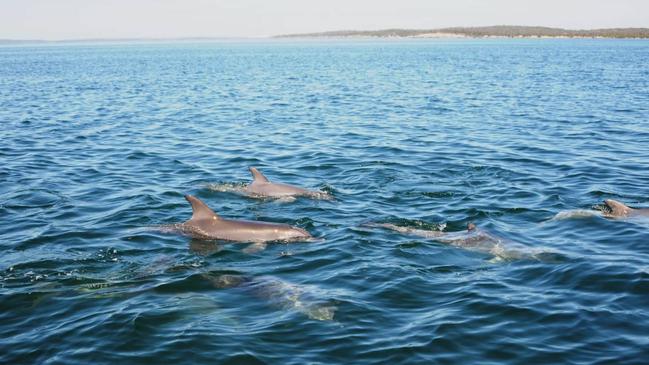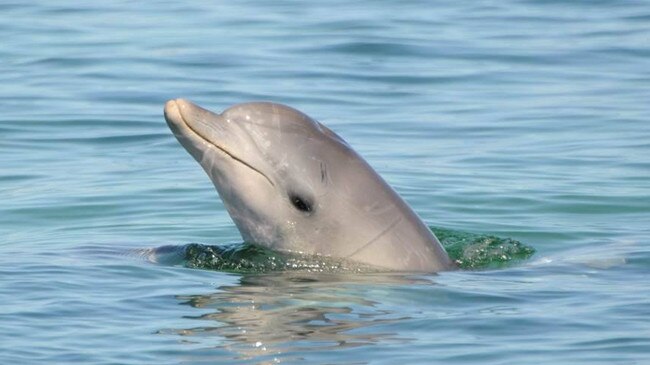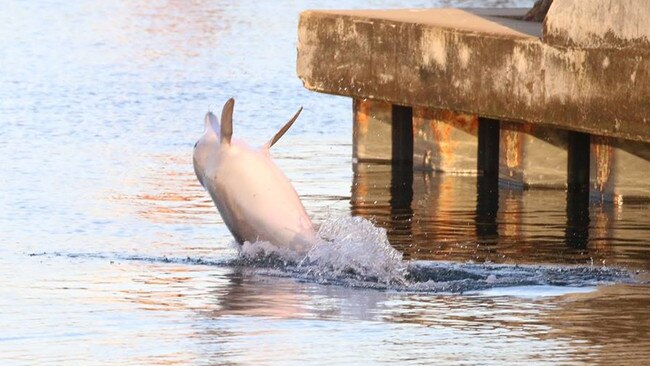Flinders University: Marine park sanctuary zones in focus to help protect dolphins
Sanctuary zones in an Eyre Peninsula marine park need to be widened or moved if they are to protect an important habitat for bottlenose dolphins, researchers say.
- Marine parks review to examine economic effects on fishing
- Kangaroo Island seaport could ‘threaten dolphins, whales’
- SA marine parks: five-year status report shows large fish numbers
- Experts reject finding into Port River dolphin’s death
Sanctuary zones in an Eyre Peninsula marine park need to be widened or moved if they are to protect an important habitat for bottlenose dolphins, researchers say.
Flinders University academics found the Coffin Bay dolphins, in Thorny Passage Marine Park, could be vulnerable to boat strikes and being caught in fishing and aquaculture equipment because they spent most of their time outside of sanctuaries.
Guido Parra, director of the university’s Cetacean Ecology, Behaviour and Evolution Lab, said the dolphins typically lived in shallow waters and were therefore susceptible to human threats.
Coffin Bay was an important habitat, home to about 300 bottlenose dolphins.
“If we want to improve the conservation of this particular population … we need to either make the sanctuary zones larger or relocate them in a way that they encapsulate more of their preferred habitat,” Dr Parra said.

The inner area of the marine park at Coffin Bay, where most of the area’s dolphins live, is about 120sq/km. It contains only about 16sq/km of sanctuary zones.
Activities such fishing, aquaculture, dredging and water sports are banned from the sanctuary areas, but recreational activities such as diving and surfing are allowed.
The university’s findings also had implications for other marine parks across the state.
“The methods we used can be applied to different areas to try and discern questions in regards to how much these sanctuary zones are actually protecting marine predators such as dolphins,” Dr Parra said.
He supervised the work, which was part of Cecilia Passadore’s PhD studies.
The research, which began in 2013, found the social animals regularly frequented shallow waters within 1km of the shore and about 2.5km of oyster farms.

Dr Parra pointed out that other factors needed consideration when deciding on the best place for sanctuary zones, along with dolphin movements.
“There’s other wildlife that needs to be considered, it’s just that dolphins haven’t been part of the equation in terms of delineating these sanctuary zones, and now that we have the information it should help for future efforts into rezoning.”
Environment Minister David Speirs said an independent review of marine parks across the state was underway.
“The review will take into account the economic, social and environmental impacts of the current marine park sanctuary zones,” Mr Speirs said.
“The review will look at all 19 marine parks and 83 sanctuary zones across South Australia with their effect on marine life such as dolphins a key element.”
The review would be complete before the end of the year, and any legislative changes would be brought to parliament in early 2019.
michelle.etheridge@news.com.au

For the first time, a wild dolphin has been spotted tail-walking outside of the Adelaide Dolphin Sanctuary.
The Port River dolphins are famous for being the world’s only wild dolphins who can walk on their tails.
Until now, the practice – learned at Marineland back in the late 1980s by famous Port River dolphin Billie, who then taught other members of the local pod – has been confined to the sanctuary’s protected waters.
But this week for the first time a young dolphin was seen on the open water at Glenelg performing the trick – a development hailed as extremely significant.
Three-year-old dolphin June, who regularly travels between the Port River and Glenelg with her mother, Lartelare, delighted dolphin-watchers by doing two tail-walks while fishing near the Glenelg marina.
Jenni Wyrsta, who spends four days a week photographing and observing the Port River dolphins, said she believed it was the first time a wild dolphin had been seen tail-walking outside of the Port River sanctuary.
“It was so completely unexpected – (June) has never done this before,” Ms Wyrsta said.
“I was later told one of the Temptation Sailing Dolphin Cruise crew saw her do it on Tuesday, which is exciting news as it means it wasn’t a one-off fluke and she will probably keep doing it.”
Ms Wyrsta said June would have learnt the feat by watching the dolphins in the Port River.
Dolphins usually learn to tail-walk from observing their mothers but Lartelare is not a known tail-walker.
The Port River pod learnt the skill – usually performed by dolphins in captivity – from the Port’s most famous dolphin, Billie, who was the world’s first wild tail-walker.
Billie disappeared from the river in 1988 and was eventually found trapped in the Patawalonga at Glenelg.
She was rescued and placed in Marineland, a marine park that opened at West Beach in 1969 and closed shortly after Billie’s release in 1988.
It was there Billie learnt to tail-walk – “standing” upright and running backwards along the water line – by copying Marineland’s captive dolphins.
When she returned to the Port River, Billie would perform this trick in the wild and soon other dolphins began to mimic her.
Thirty years on, the incredible feat is still regularly seen among the Port River dolphins as it has been passed on through the generations.
- Ashleigh Pisani
